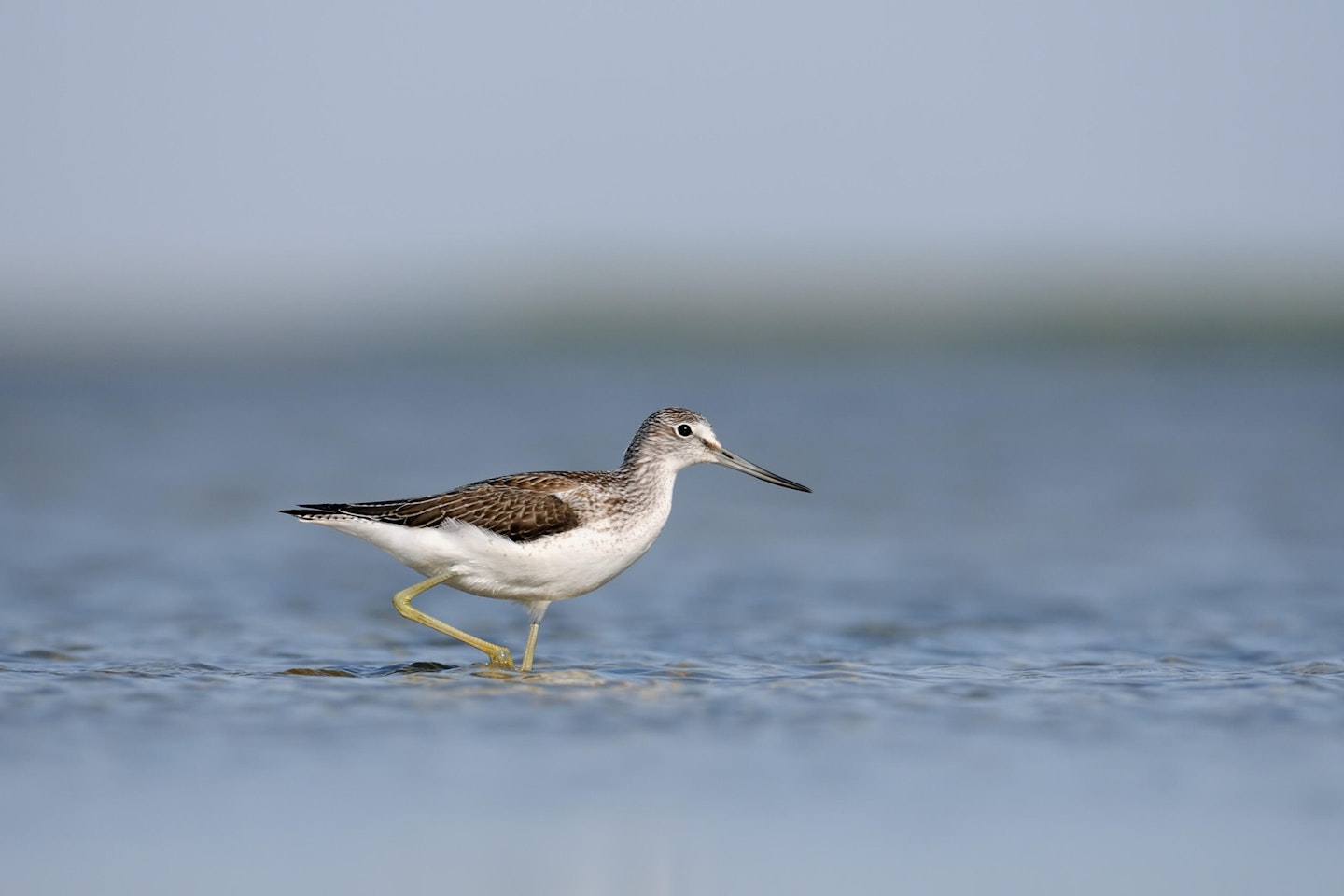Greenshank

The elegant yet somehow equally gawky Greenshank is, like most of our waders, a northern breeding bird. This includes a population breeding in north and west Scotland, which may be as many as 1,000 pairs strong (though the last survey was more than 20 years ago). In July, we start to see juvenile birds returning from the breeding grounds and making their leisurely progress south, usually through freshwater sites. They are darker backed and more evenly marked than adults. Greenshanks are shy birds, and noisily declare when they are disturbed. These juveniles sound like they have the breaking voice of a teenager, as they shout out the ‘tew tew tew’ scolding calls.
Sandwich Tern

Like many colonially nesting seabirds, avian influenza has had a devastating on this large, pale, shaggy-crested, black-billed tern. Almost exclusively a coastal species, specialising in eating small fish, in summer, birds may wander across land and turn up at pits, lakes, reservoirs etc to rest, preen and perhaps to feed before moving on. Alternatively, they can be seen at the coast especially near their colonies.
Curlew Sandpiper

Like a tall, long-necked, long billed neater, ‘cleaner’ version of juvenile Dunlin, but with a white rump, the juvenile Curlew Sandpiper is a scarce treat. In July and into August, you may also see returning adults, which have a deep-brick red plumage (like a darker version of a Knot or Bar-tailed Godwit, in breeding feathers). They may also be moulting to the greyer winter plumage and so look a bit patchy. This is largely a freshwater species, favouring shallow edged pits and scrapes, though they don’t mind wading up to their bellies.
Dartford Warbler

There are currently more than 2,000 pairs of this shy, heathland specialist Sylvia warbler in the UK. As resident birds, these little warblers are susceptible to cold winters, and there were crashes after the cold winters of 2008/9 and 2009/10, and despite apparent expansions of the range into more central England, the population has probably not fully recovered. However, with warming winters, there is likely to be further expansion of this essentially Mediterranean warbler’s range in this countyr. They are small, dark, long tailed warblers which seem to spend most of their time hidden in dense gorse or heather, but are utterly charming if seen well.
Tree Sparrow

According to official (BTO) figures, there are 245,000 pairs of Tree Sparrow in the UK. This represents the survivors of one of the most dramatic crashes of a small British bird (declines which are reflected across Europe). It is a sobering thought that there were 20 times the number of British Tree Sparrows in the 1970s compared with today. Tree Sparrows are now most common in northern England, eastern Scotland and the Welsh Marches in Great Britain. They are like slightly smaller, neater House Sparrows with identical sexes, with a brown crown, white collar and a black spot on the white cheek.
